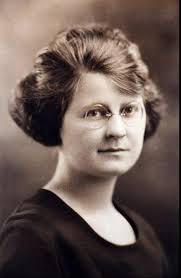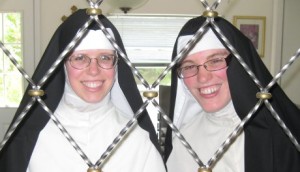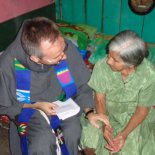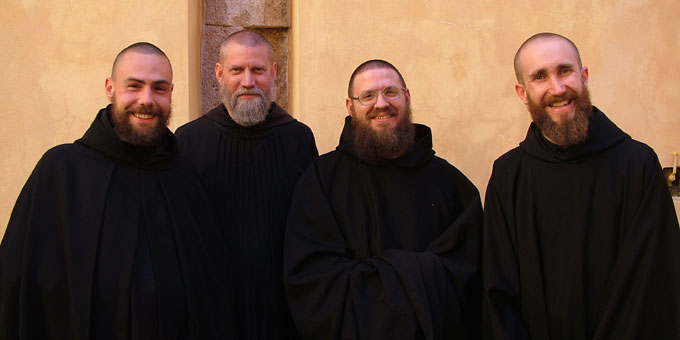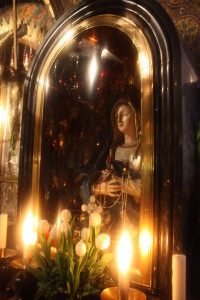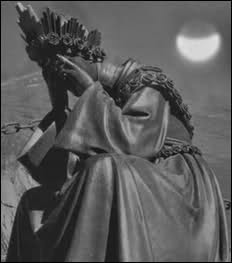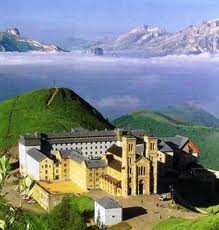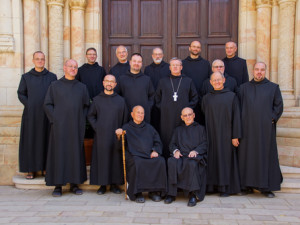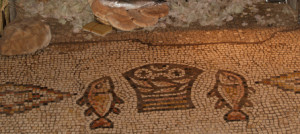 On Friday, October 3, on the eve of the Feast Day of St. Francis of Assisi, the world lost a Franciscan giant when Fr. Benedict Groeschel, CFR, passed away at the home of the Little Sisters of the Poor in Totowa, in NJ. Father was a man who touched an incredible number of people throughout his 81 years of life. Not just because he was a popular EWTN host, but also because he was a man of the poor, a man of the suffering, a man who loved religious, a man of the wounded, a man who understood the daily challenges of living and a sometime comedian who made everyone laugh with his Jersey accent and anecdotes.
On Friday, October 3, on the eve of the Feast Day of St. Francis of Assisi, the world lost a Franciscan giant when Fr. Benedict Groeschel, CFR, passed away at the home of the Little Sisters of the Poor in Totowa, in NJ. Father was a man who touched an incredible number of people throughout his 81 years of life. Not just because he was a popular EWTN host, but also because he was a man of the poor, a man of the suffering, a man who loved religious, a man of the wounded, a man who understood the daily challenges of living and a sometime comedian who made everyone laugh with his Jersey accent and anecdotes.
I had the privilege of being his driver and general factotum during one Marian Conference weekend and was happily surprised to find out that the man whom I saw on TV was the man as he was in real life. Father was Father. He greeted me and my friend Anne every morning by saying, “Hello Annes.” And we laughed.
Father was a great friend of the IRL because he loved religious life and knew of its value to the Church. He came to meeting after meeting because he wanted to encourage everyone on the road to renewal. In 1995, he said that religious life often comes back first with contemplatives and those who deal with the desperately poor. He cited Mother Teresa as an example, and certainly his own community is living witness of this truism.
He was not afraid to be innovative but the way to be innovative he said was with devout young people. He didn’t like any music composed after the 16th century but in his own community Father Stan Fortuna reached kids through holy rap music. “I don’t belong to YOUTH 2000—I belong to YOUTH 1960,” he said. Yet, he cautioned religious to be wary of going back to “the oppressiveness of the old religious life.” He was all for authentic religious life that had a breath of fresh air coming into it from the Holy Spirit.
Father spoke to IRL friends and religious at meetings in 1995, 1998, 2001, 2003, 2008, and 2010. From his hospital bed, recovering from grievous wounds suffered after he was hit by a car, he recorded a speech upon his reception of the 2004 Pro Fidelitate et Virtute Award that was played at the National Meeting banquet.
He was also a good friend of Father John Hardon, SJ, who lived at Fr. Groeschel’s Capuchin friary in the 1960’s. Fr. Groeschel was a witness for Father Hardon’s cause for canonization. He said: “As a friar, I say that I every day pray to my good friend Father Hardon.”
After his accident, he said, “When things are going badly or when the darkness of it all settles in on me, I turn to the Rosary…it is a great blessing and a great school of spirituality.” Blessed Mother, a great son of the Church has returned home. May the angels and the Franciscan saints welcome him to Paradise.
For a wonderful review on his life, click here to see a video commemorating his 50th anniversary as a priest.

